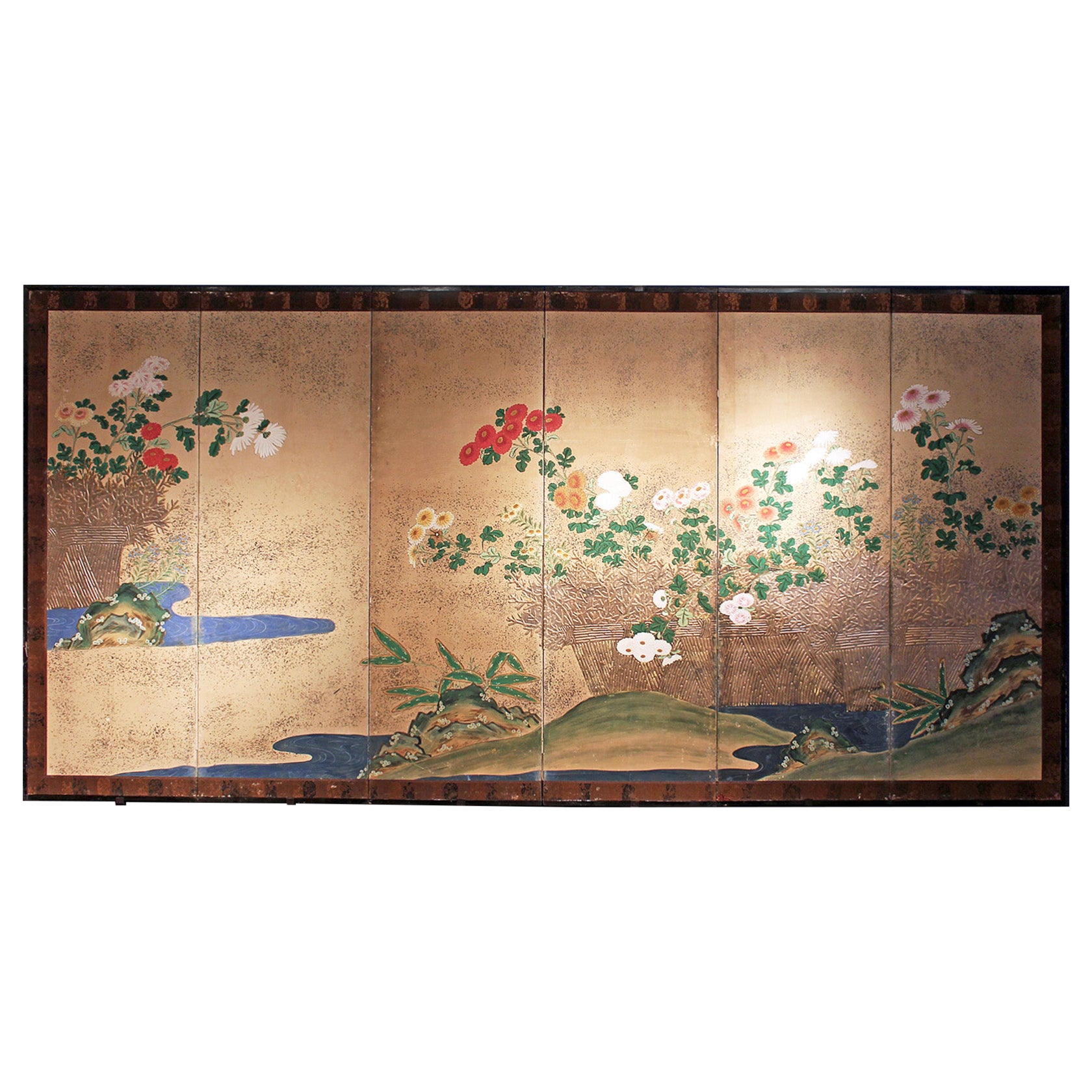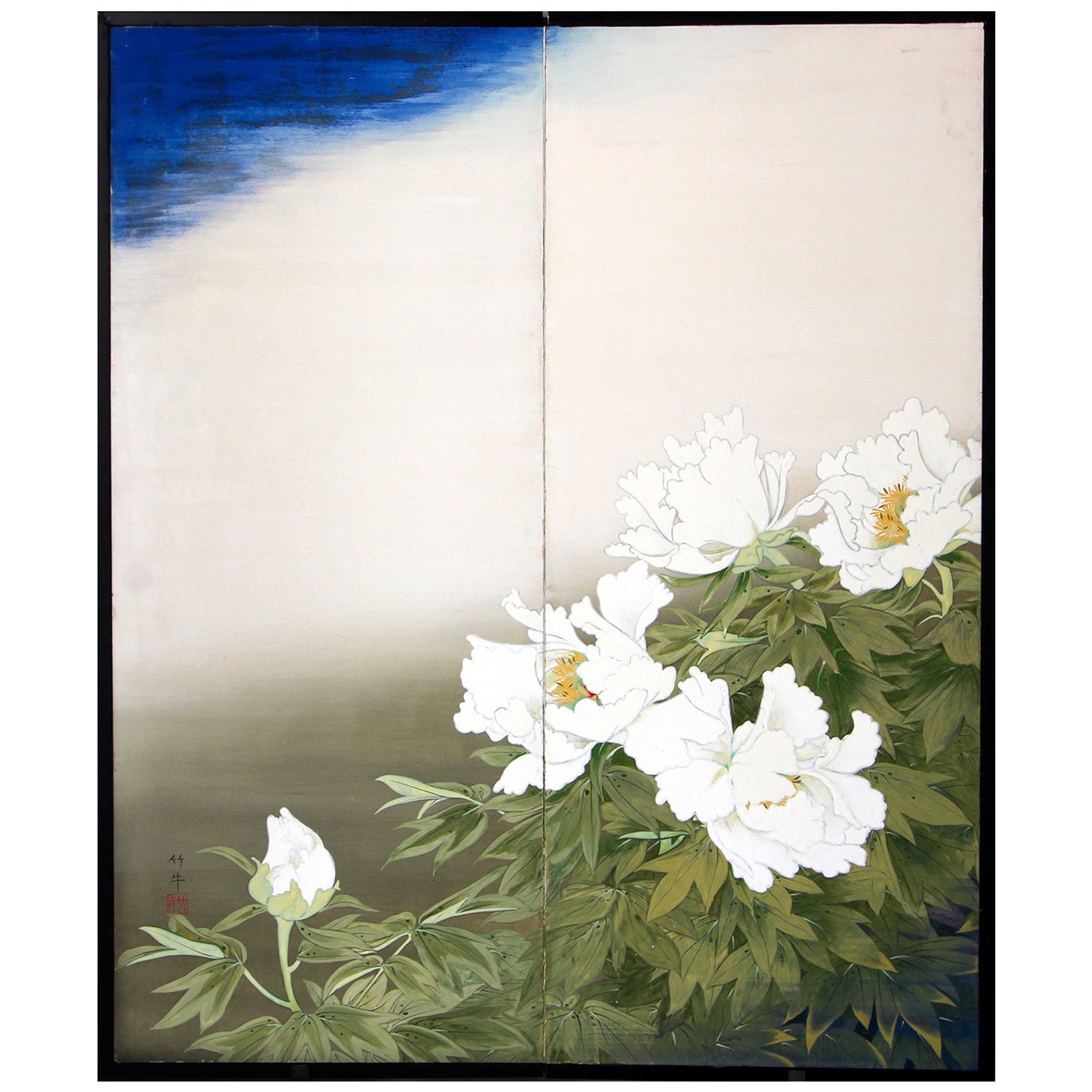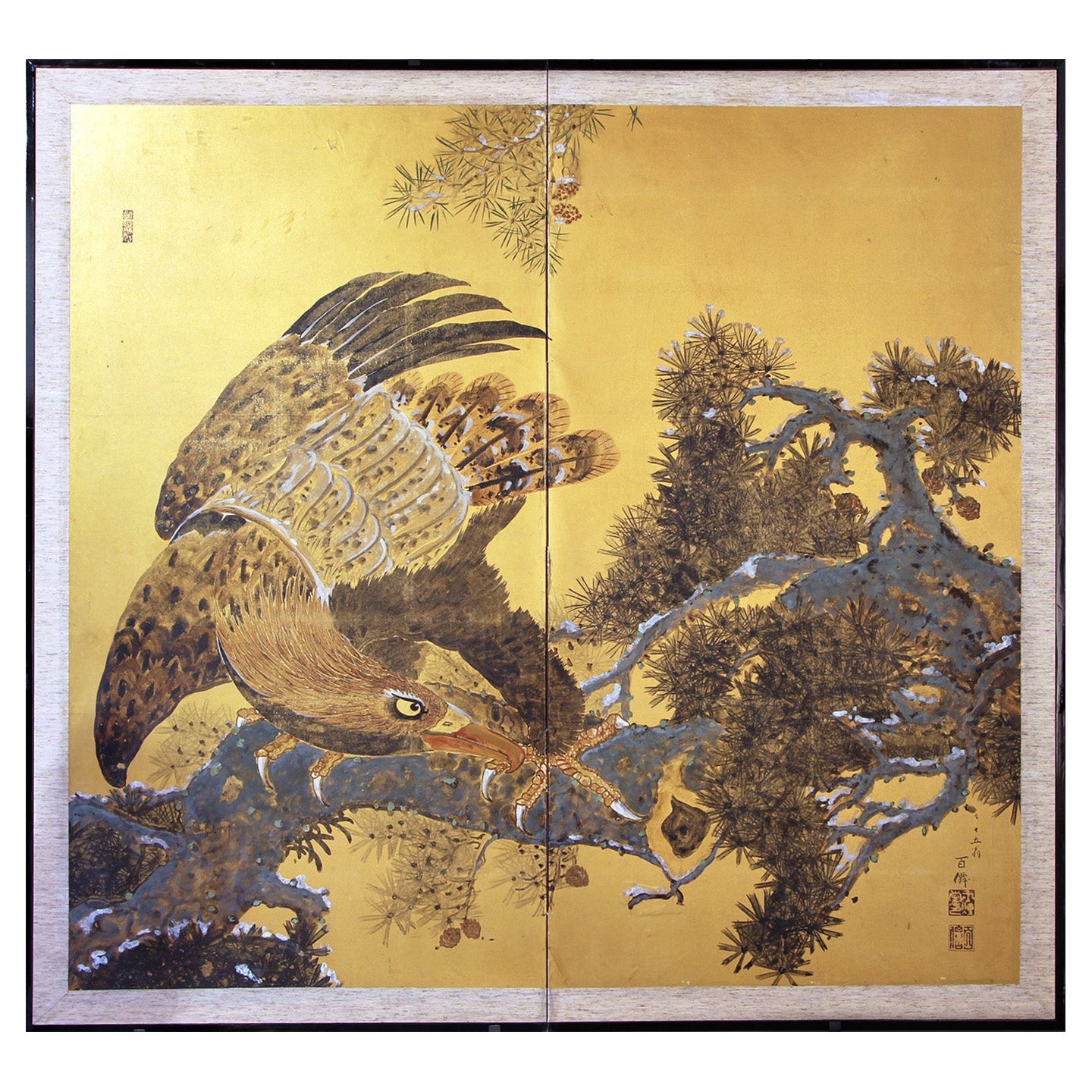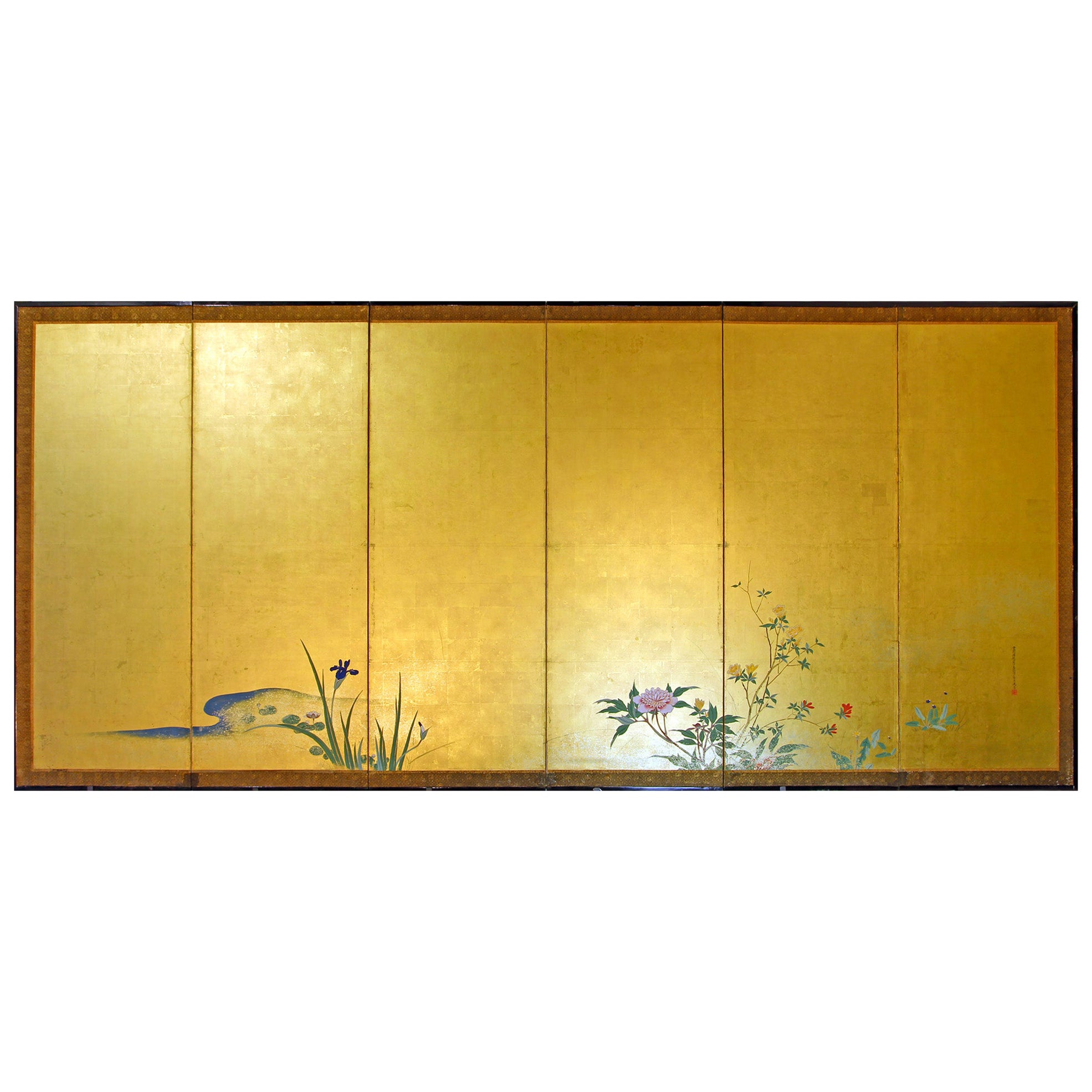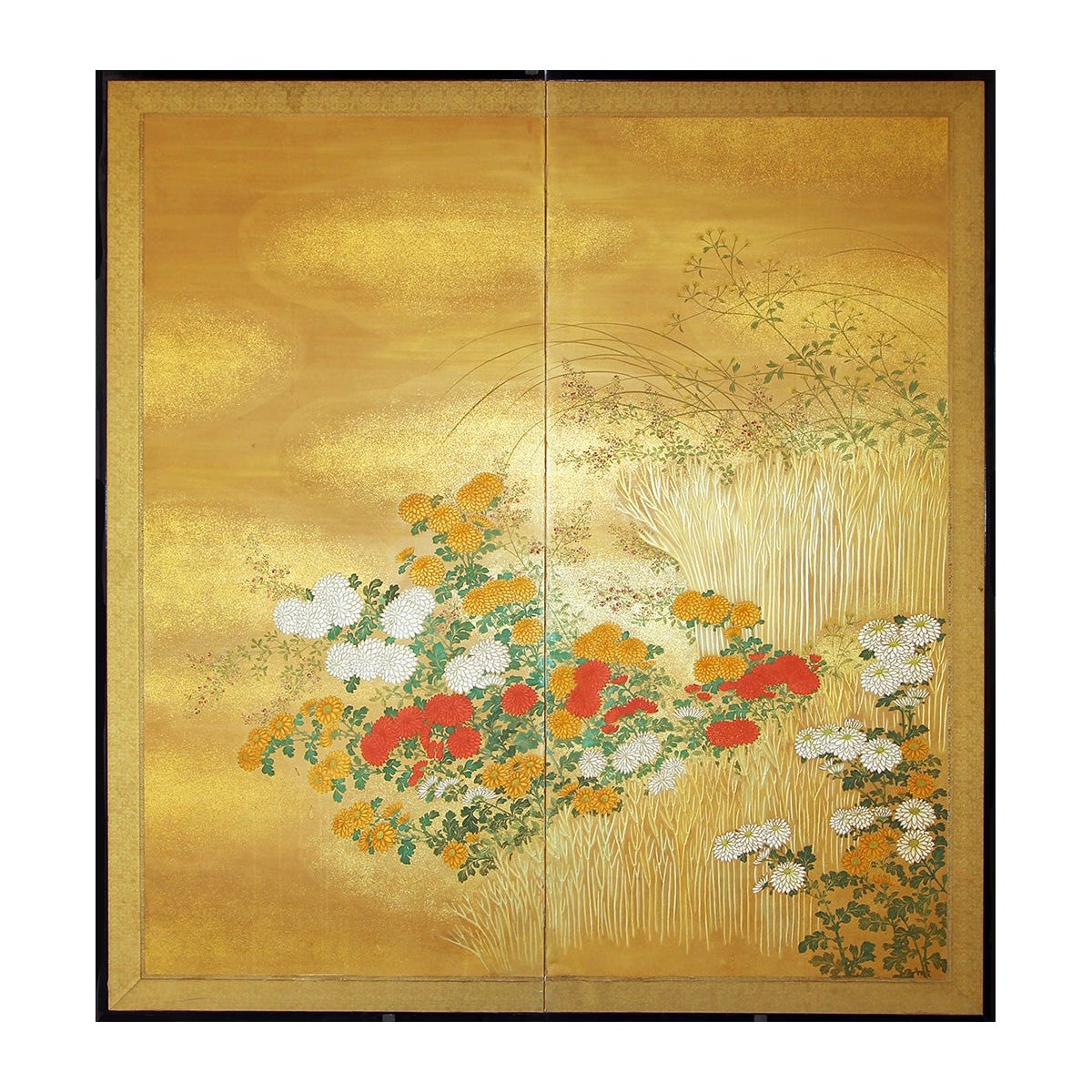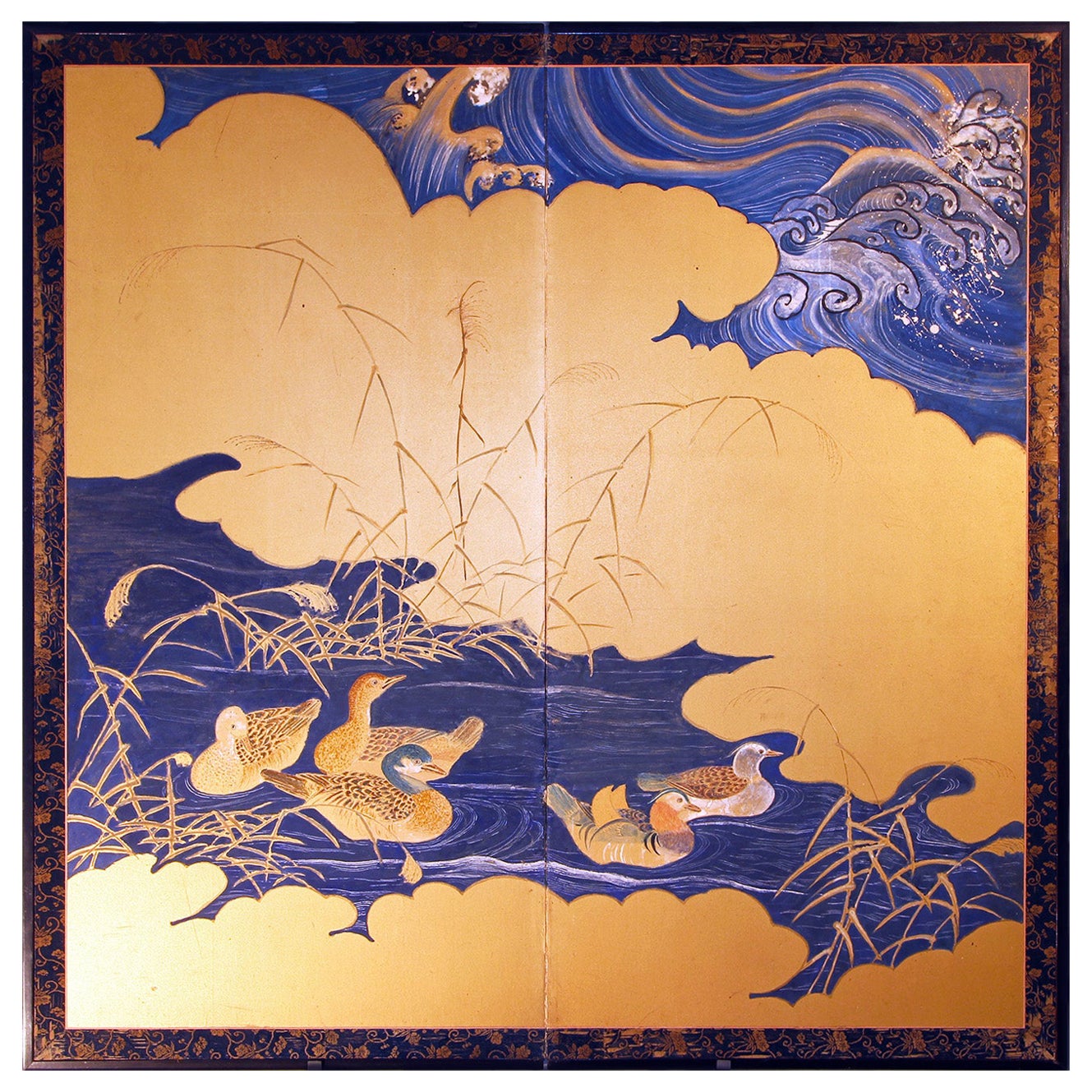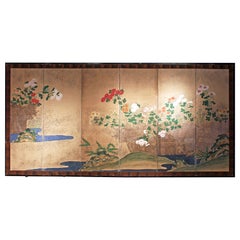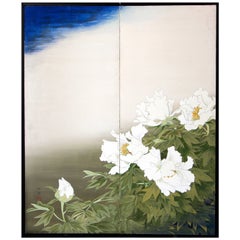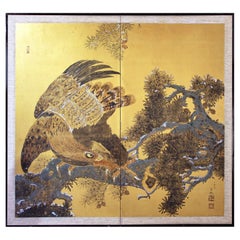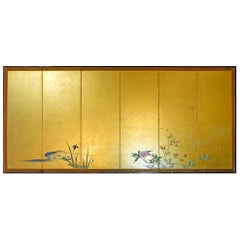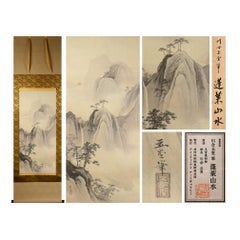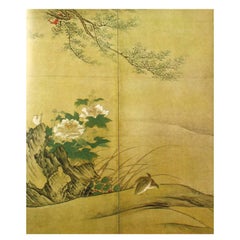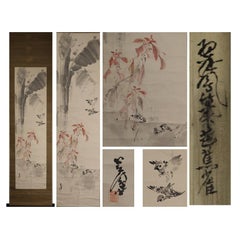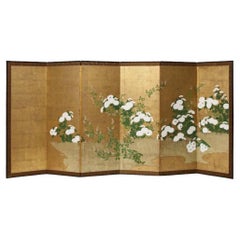Want more images or videos?
Request additional images or videos from the seller
1 of 7
Japanese screen
$7,069.05
£5,261.47
€5,900
CA$9,682.83
A$10,769.42
CHF 5,623.46
MX$131,052.36
NOK 71,820.11
SEK 67,354.59
DKK 44,914.64
Shipping
Retrieving quote...The 1stDibs Promise:
Authenticity Guarantee,
Money-Back Guarantee,
24-Hour Cancellation
About the Item
Two-panel screen of Rinpa school painted with mineral pigments on silk and rice paper.
It depicts colorful peony flowers. This is the flower of spring, symbolizing success and prosperity.
A nice size for modern or classic decor.
It is well preserved, the panel hinges strong.
Free metal hooks for hanging the screen on the wall are available upon request.
Lucio Morini guarantees the authenticity and origin of the work. The seriousness of the antique dealer is certain thanks to the long experience of over 40 years of activity at the service of many customers in Italy and around the world.
- Creator:Japanese Studio (Artist)
- Dimensions:Height: 59.85 in (152 cm)Width: 59.06 in (150 cm)Depth: 0.79 in (2 cm)
- Style:Showa (In the Style Of)
- Materials and Techniques:
- Place of Origin:
- Period:
- Date of Manufacture:1960 circa
- Condition:
- Seller Location:Brescia, IT
- Reference Number:1stDibs: LU5628237759982
About the Seller
5.0
Recognized Seller
These prestigious sellers are industry leaders and represent the highest echelon for item quality and design.
Gold Seller
Premium sellers maintaining a 4.3+ rating and 24-hour response times
Established in 1981
1stDibs seller since 2021
20 sales on 1stDibs
Typical response time: 2 hours
- ShippingRetrieving quote...Shipping from: Brescia, Italy
- Return Policy
Authenticity Guarantee
In the unlikely event there’s an issue with an item’s authenticity, contact us within 1 year for a full refund. DetailsMoney-Back Guarantee
If your item is not as described, is damaged in transit, or does not arrive, contact us within 7 days for a full refund. Details24-Hour Cancellation
You have a 24-hour grace period in which to reconsider your purchase, with no questions asked.Vetted Professional Sellers
Our world-class sellers must adhere to strict standards for service and quality, maintaining the integrity of our listings.Price-Match Guarantee
If you find that a seller listed the same item for a lower price elsewhere, we’ll match it.Trusted Global Delivery
Our best-in-class carrier network provides specialized shipping options worldwide, including custom delivery.More From This Seller
View AllSix-Panel Japanese Screen
By Japanese Studio
Located in Brescia, IT
Six-panel screen of Rinpa school, painted with mineral pigments and gofun on vegetable paper and silver leaf.
Category
Antique Early 19th Century Japanese Edo Paintings and Screens
Materials
Silver Leaf
Two-panel screen
By Japanese Studio
Located in Brescia, IT
Modern two-panel screen with white peonies.
Hand-painted on vegetable paper.
Very fresh work that is easy to incorporate into design furniture.
Very good state of preservation, sig...
Category
20th Century Japanese Showa Paintings and Screens
Materials
Wood, Paper
$3,594
Japanese screen two-panel
By Japanese Studio
Located in Brescia, IT
Eagle on a pine branch with traces of white snow.
A rare subject for this mid-century two-panel screen, painted in mineral pigments on gilded paper.
The screen is a nice size and is ...
Category
20th Century Japanese Showa Paintings and Screens
Materials
Paper
Paravento Giapponese a sei pannelli su foglia d'oro.
By Japanese Studio
Located in Brescia, IT
Paravento giapponese a sei pannelli , opera di un pittore della prima metà del 19° secolo, di scuola Rinpa.
Sei pannelli dipinti con inchiostro su foglia oro e "gofun" su carta veget...
Category
Antique Early 19th Century Japanese Edo Paintings and Screens
Materials
Gold Leaf
Two-panel screen of " Rinpa School"
By Japanese Studio
Located in Brescia, IT
Floral scene of a Rimpa School garden with polychrome chrysanthemum flowers.
Two-panel screen painted in pigment on gilded rice paper of beautiful size and well preserved.
Bold color...
Category
20th Century Japanese Showa Paintings and Screens
Materials
Gold Leaf
Paravento Giapponese a due pannelli
By Japanese Studio
Located in Brescia, IT
Sempre alla ricerca di cose particolari abbiamo acquistato questo paravento giapponese da una collezionista di Osaka.
Un esempio di arte del novec...
Category
20th Century Japanese Showa Paintings and Screens
Materials
Gold
You May Also Like
Artists Kawai Gyokudō Showa Period Scroll Japan 20c Artist Nihonga
Located in Amsterdam, Noord Holland
Kawai Gyokudo (?? ??, November 24, 1873-June 30, 1957) was the pseudonym of a Japanese painter in the Nihongo school, active from Meiji through Showa period Japan. His real name was Kawai Yoshisaburo.
Contents
Biography
Gyokudo was born in what is now Ichinomiya city, Aichi Prefecture, as the eldest son of a paper, ink and brush merchant. He went to Kyoto in 1887 to study under Kono Bairei of the Maruyama-Shijo school of painting. In 1896, he moved to Tokyo and he became the student of Hashimoto Gaho, of the Kano school. He also studied Western-style painting and developed a highly personal style, especially in the field of landscape painting.
Gyokudo is noted for his polychrome and occasionally monochrome works depicting the mountains and rivers of Japan in the four seasons, with humans and animals shown as part of the natural landscape. Among his representative works are Futsuka zuki (“The New Moon”), Yuku haru (“The Departing Spring”), Mine-no-yu (“Evening at the Mountain Top”), and Bosetsu (“Snow in the Evening”).
In 1898, Gyokudo joined with Okakura Tenshin and Yokoyama Taikan...
Category
20th Century Japanese Taisho Paintings and Screens
Materials
Silk
$1,907 Sale Price
20% Off
The Traditional Arts of Japan by H. Boger, First Edititon
Located in valatie, NY
The Traditional Arts of Japan by H. Boger. Garden City: Doubleday and Co., 1964. First edititon hardcover lacking slipcase. With 369 black and white photographs, 26 color reproductio...
Category
20th Century American Books
Materials
Paper
Artists Suiho Yano Showa Period Scroll Japan 20c Artist Nihonga
Located in Amsterdam, Noord Holland
As you can see, it is a work of "Basho / Sparrow" drawn by Midori Yano.
Under Basho, this work skillfully depicts the appearance of sparrows forming a flock and singing food.
«Su...
Category
20th Century Japanese Taisho Paintings and Screens
Materials
Silk
$1,140 Sale Price
20% Off
Kiku to Hagi Byobu, Rinpa School Style, Edo Period.
Located in Point Richmond, CA
A Chrysanthemum and Bush Clover painting on gold leaf six-panel folding screen, painted with clusters of leafy green chrysanthemum plants with white blossoms having moriage relief petals of gofun growing amidst pink blossoming bush clover within a bunched bush clover garden fence rendered in lighter gold relief, all on a background entirely of rich gold leaf. These two flowers are symbolic of Japan and the autumn season. The classic patterned paper verso with a Naga Antiques...
Category
Antique Early 1800s Japanese Edo Paintings and Screens
Materials
Gold Leaf
Japanese Antique Fukusa Textile Art Meiji Period
Located in Atlanta, GA
A Japanese silk Fukusa panel circa late 19th-early 20th century of Meiji Period. The front was beautifully decorated with Yuzen-zome, a labor intensive resist-dye technique invested by an artist monk Miyazaki Yuzensai (1654 -1736) of Edo period. The front cover likely depicts a scene from the Tale of Genji, showing a nobleman and his servant pays a visit to a lady in a fenced thatch-roof house under a high peak. The details of blossom trees and pines, as well as the characters, and scenery with a gradual color are astounding. It is telling that the Yuzen dying was used such an mastery.
The piece has a red silk backing and still retains two red tassels on the lower corners as well as decorative stitches along the edges. There is a patched design on the back likely a Mon symbol (family crest).
Fukusa is a traditional Japanese textile...
Category
Early 20th Century Japanese Japonisme Textiles
Materials
Silk
Japanese Two-Panel Screen Peony and Cherry
Located in Hudson, NY
Japanese two-panel screen: Peony and Cherry, Edo period (circa 1800) painting, formerly fusuma (Japanese sliding doors), executed in the Kano school style, featuring a cherry tree in...
Category
Antique Early 1800s Japanese Edo Paintings and Screens
Materials
Gold Leaf
More Ways To Browse
Japanese Silk Painting 20th Century
Japanese Showa Screen
Japanese Screen Rinpa
Wood Crane
Japanese Folding Screen Screen
China Silk Panels
Chinese Silk Panel
Meiji Silk
Japanese Screen Bamboo
Large Chinese Screens
Japanese Insect
Chinese Lattice
Chinese Qing Dynasty Paintings
Crane Panel
Antique Hand Painted Japanese China
Japanese Cherry Tree
Japanese Silk Painting 20th Century
Japanese Crane Art
